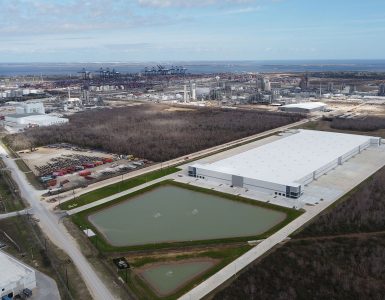Developers are repositioning vacant space as charter schools
Building Design + Construction, August 13, 2021
A nexus of growing demand for charter schools and a pandemic-driven increase in commercial vacancies is presenting adaptive reuse opportunities to developers and AEC firms.
Charter schools are the fastest-growing sector of U.S. education, with California, Florida, and Texas leading the pack. One in five students in Arizona is enrolled in a charter school.
There are more than 3.3 million students enrolled in 7,500-plus charter schools in 44 states, the District of Columbia, Puerto Rico, and Guam, with a waiting list of nearly 2 million more, according to the National Alliance for Public Schools, a leading nonprofit dedicated to the advancement of the public charter school movement.
Finding real estate “has always been a challenge” for charter school owner-operators, says Mark Medema, Managing Director of the Alliance’s Charter School Facility Center. In response, more charter schools are finding homes in repurposed commercial spaces that, in many cases, were vacated by tenants during the coronavirus pandemic that led companies, cities, and states to impose occupancy restrictions.
So in San Antonio, a charter school now fills an empty grocery store; in Austin, a vacant Costco has been repurposed; in New York, two floors of a public housing complex in Harlem now serve as a charter school.
Medema says that empty retail space is presenting the greatest opportunity, as charter schools typically need 30,000 to 50,000 sf of space, and sometimes much more. He notes that in the Dallas market, a charter school took over the lease of a shopping mall’s anchor store that closed.
A TURNKEY REPOSITIONING APPROACH
The Alliance has also been watching how the real estate consulting firm Transwestern has been helping its clients in urban centers return to their offices. The Alliance and Transwestern have joined forces to devise a turnkey solution that leverages high vacancy rates in certain markets and product types to address the need for more educational space.
Casey Noel, Transwestern’s Vice President-nonprofit advisory services, says old warehouses in urban markets are being transformed into charter schools. “The conversion costs are relatively low, and the zoning can be conducive,” says Noel. He adds that certain municipalities offer developers community facility density bonuses, which fit how charter school repositionings often build out. “Owners and developers are looking for ‘buildabilty,’” he says.
Transwestern starts this process as a consultant, interacting with charter school boards and finding suitable real estate. Its knowledge of city and state policies, as they pertain to charter schools and real estate conversions, is invaluable, says Noel. Transwestern’s involvement ends when a school signs a lease.
AN ‘IDEAL’ TENANT
Noel says that it takes at least 18 months to convert a warehouse into a charter school, although the conversion period for any space depends on size, location, and the condition and adaptability of the property.
Medema thinks that developers should be jumping at the chance to reposition vacant commercial space as a charter school. “Charters are ideal tenants because they produce a steady revenue stream, are government funded, have stable enrollments, and are almost recession proof.”
The Alliance’s objective is to foster the option of a charter school education to every family that wants it for their children. Medema doesn’t envision charter schools ever surpassing public school, but he does see their market share—currently at around 6.5% of all public-school students—hitting or even exceeding 10% eventually.
In Pandemic Recovery, Alternative Property Types Become Core Investments, but There Are Risks
CoStar News, August 26, 2021
Institutional investors are sitting on piles of cash to buy property, and many are finding they have to look outside the traditional strongholds of office, retail, multifamily and industrial for returns.
“Many of these alternative sectors have or had not seen the level of owner consolidation, or repeat trades, that often draws the value out, so investors feel they’ve been overlooked and undervalued,” Keith Pierce, vice president of research for Transwestern, said in an email to CoStar News.
“If you look back over the last 15 months the amount of capital being raised in the U.S. for income-producing real estate is unprecedented. There are funds seeking an additional $360 billion of investments for income-producing real estate,” Steve Pumper, executive managing partner of Transwestern’s capital markets group, said in an interview. “You have to be more creative so you can place the capital and still achieve your return based upon investment horizons. So, what we’ve seen is that growth in alternative investment strategies, as well as secondary markets.”
Southwest Dallas’ Redbird redo ramps up to land office and medical tenants
Dallas Morning News, August 25, 2021
A commercial property firm has signed on to hunt tenants for the biggest real estate development project in southwest Dallas. Transwestern Real Estate Services has been hired to round up medical and office tenants for the $200 million redevelopment of the former Redbird mall at Interstate 20 and U.S. Highway 67.
French Investment Firm Doubles Down With 745 Fifth Avenue Expansion
Commercial Observer, August 26, 2021
Parisian investment firm Eurazeo is doubling its Manhattan presence — and then some — with a 14,079-square-foot expansion at Paramount Group’s 745 Fifth Avenue, Commercial Observer has learned.
The lease moves the investor from a 6,200-square-foot hold on the 32nd floor to a terrace-included office on the 19th floor, according to tenant broker Transwestern Real Estate Services.
Transwestern Sentiment Survey Provides Optimistic Outlook at Midyear
Connect, August 22, 2021
Transwestern’s Midyear 2021 Commercial Real Estate Market Sentiment Survey provides an optimistic picture of commercial real estate performance over the next 12 months. Unsurprisingly, the survey says that industrial and medical office are expected to see continued growth.
























